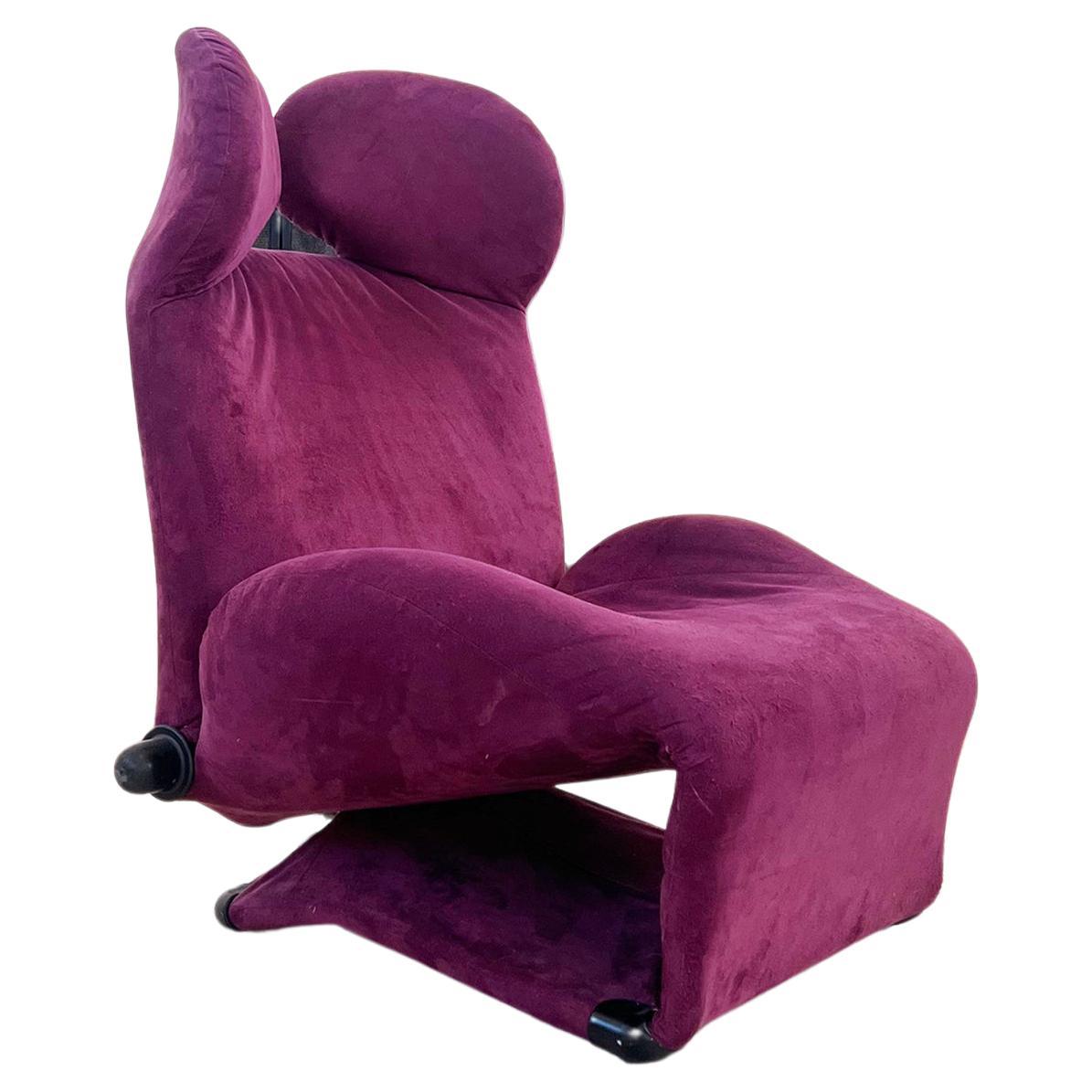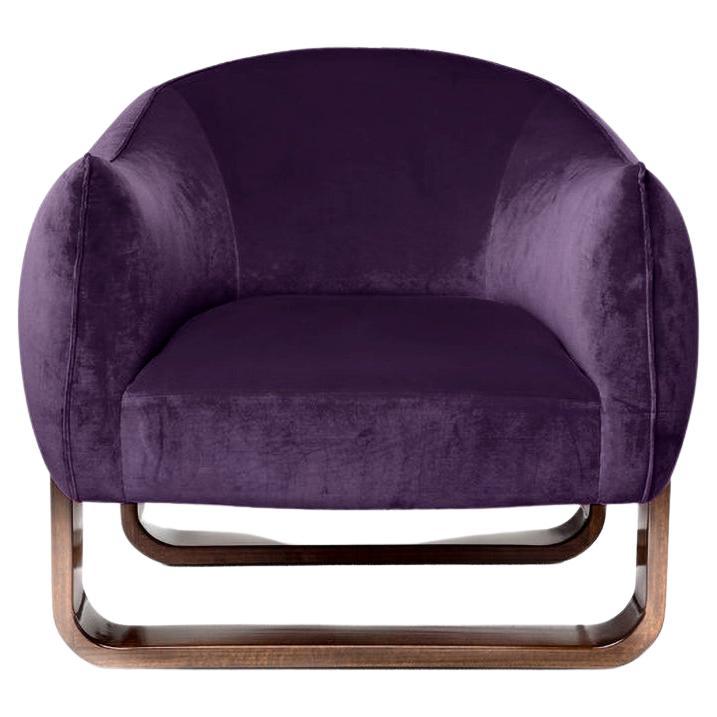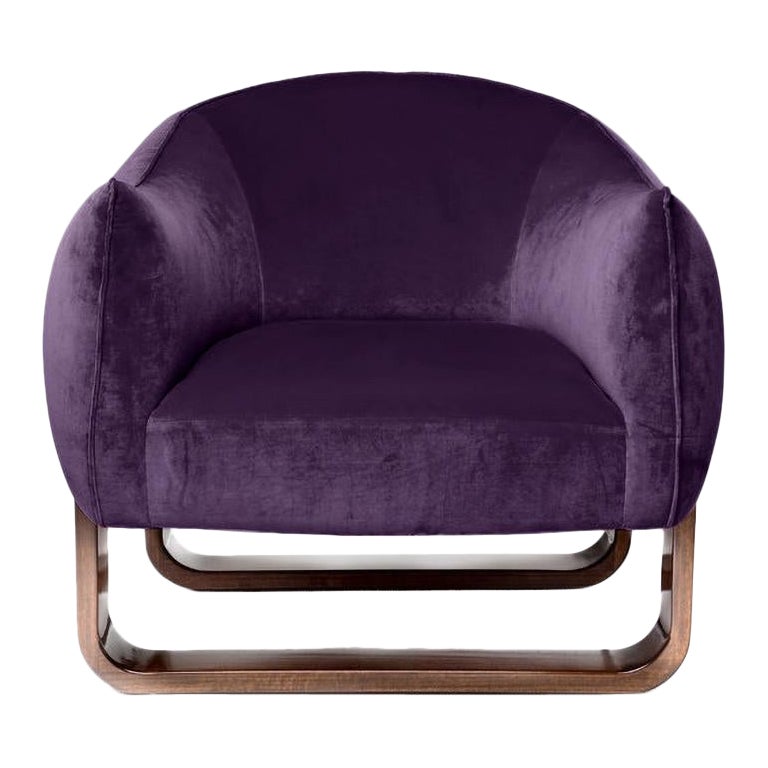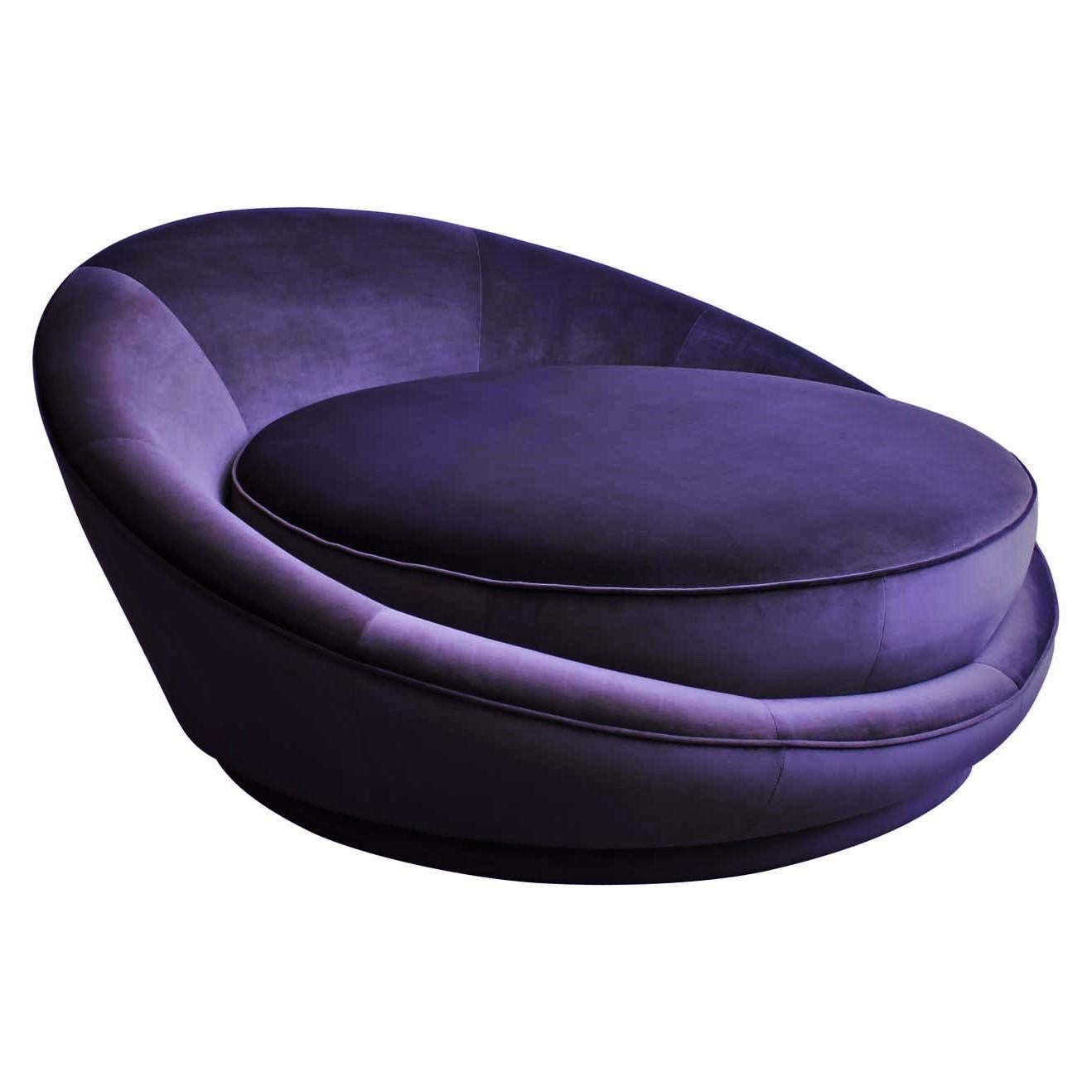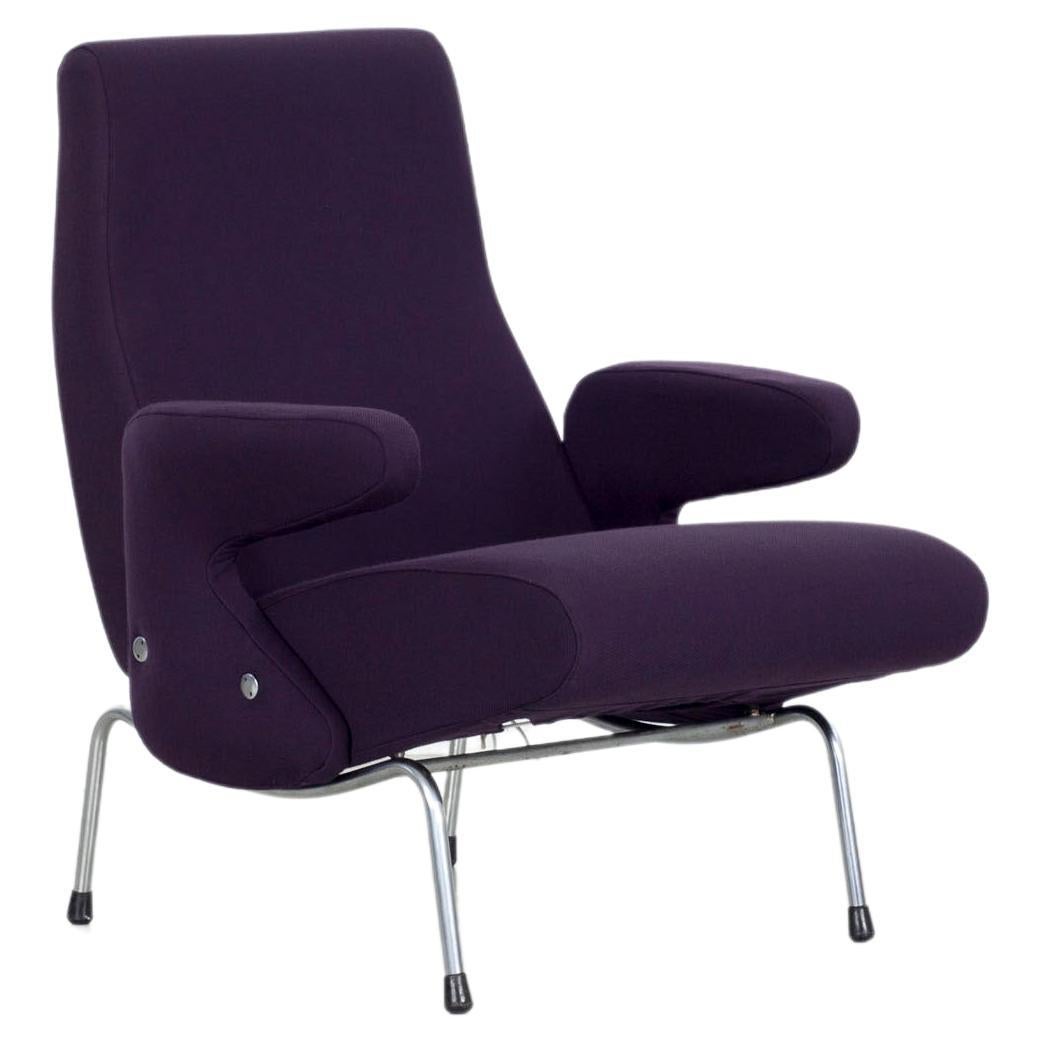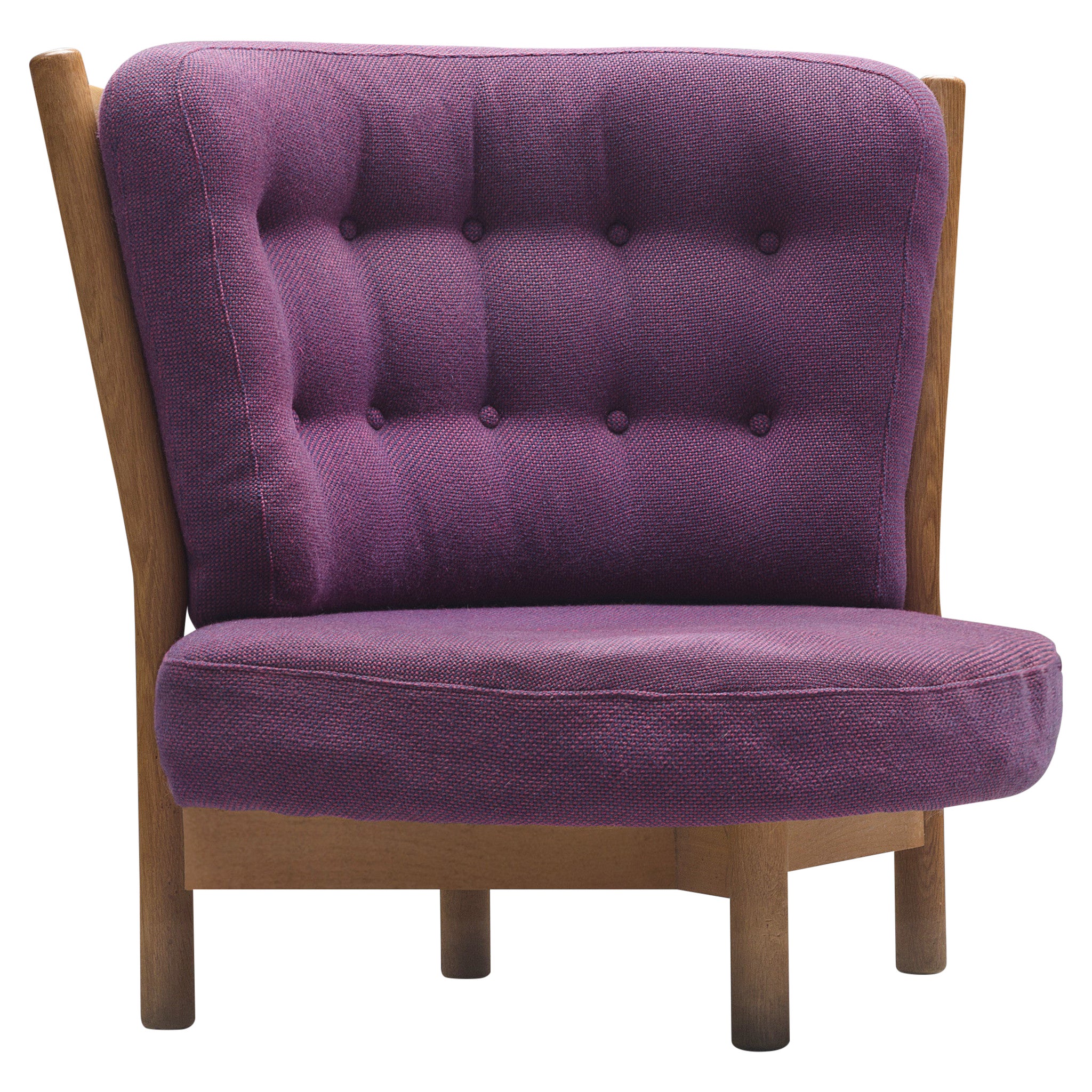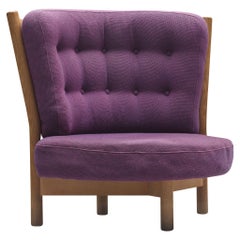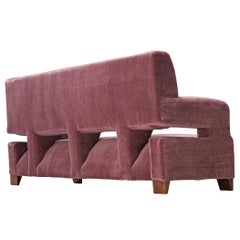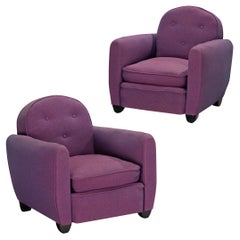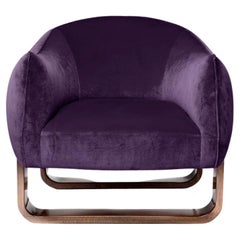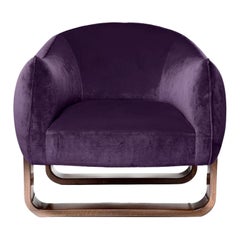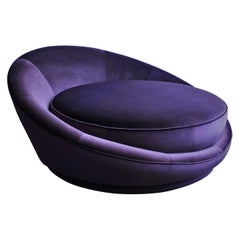Bo Wretling for Otto Wretling Lounge Chair in Bicolor Purple Pierre Frey Mohair
About the Item
- Creator:Bo Wretling (Designer),Otto Wretling (Manufacturer)
- Dimensions:Height: 27.96 in (71 cm)Width: 28.94 in (73.5 cm)Depth: 42.05 in (106.8 cm)Seat Height: 11.82 in (30 cm)
- Style:Scandinavian Modern (Of the Period)
- Materials and Techniques:
- Place of Origin:
- Period:
- Date of Manufacture:1930s
- Condition:Wear consistent with age and use. Every item Morentz offers is checked by our team of 30 craftspeople in our in-house workshop. Special restoration or reupholstery requests can be done. Check ‘About the item’ or ask our design specialists for detailed information on the condition.
- Seller Location:Waalwijk, NL
- Reference Number:Seller: 501143001stDibs: LU933145056892
Otto Wretling
Otto Leonard Wretling, born June 26, 1876, in the city of Umeå, was a Swedish visual artist, designer, painter and furniture manufacturer. Otto Wretling is best known for the Ideal Table, patented in 1936. Together with his brother Wilhelm (1871–1951), Otto Wretling took over his father's painting company in 1897. The business was expanded in 1905 with furniture carpentry. The brother later withdrew, but Otto Wretling continued - first on his own and then with the help of the children - to run the company Otto Wretling for modern room art, which had a studio and workshops in central Umeå. The company was active until 1969. In addition to being a manufacturer, Otto Wretling was the company's first designer. The company designed its furniture but also placed orders.

Established in 2006, Morentz has a team of approximately 55 restorers, upholsterers, interior advisers and art historians, making it a gallery, workshop and upholstery studio, all in one. Every day, a carefully selected array of 20th-century furniture arrives from all over the world at the firm’s warehouse, where the team thoroughly examines each piece to determine what, if any, work needs to be done. Whether that means new upholstery or a complete restoration, Morentz's aim is always to honor the designer’s intention while fulfilling the wishes of the client. The team is up to any challenge, from restoring a single piece to its original glory to furnishing a large-scale hotel project.
- ShippingRetrieving quote...Shipping from: Waalwijk, Netherlands
- Return Policy
More From This Seller
View AllVintage 1960s French Mid-Century Modern Lounge Chairs
Fabric, Oak
Vintage 1920s French Art Deco Lounge Chairs
Velvet, Walnut
Vintage 1930s Italian Mid-Century Modern Sofas
Mohair, Walnut
Vintage 1930s French Art Deco Lounge Chairs
Fabric, Beech
Vintage 1960s French Mid-Century Modern Sofas
Fabric, Oak
Vintage 1970s English Post-Modern Sofas
Fabric
You May Also Like
Vintage 1980s Italian Post-Modern Lounge Chairs
Metal
21st Century and Contemporary American Mid-Century Modern Armchairs
Fabric
21st Century and Contemporary American Mid-Century Modern Armchairs
Fabric
Vintage 1960s American Mid-Century Modern Chaise Longues
Upholstery
Vintage 1950s Italian Mid-Century Modern Lounge Chairs
Chrome
Vintage 1960s Danish Scandinavian Modern Lounge Chairs
Wool, Teak
